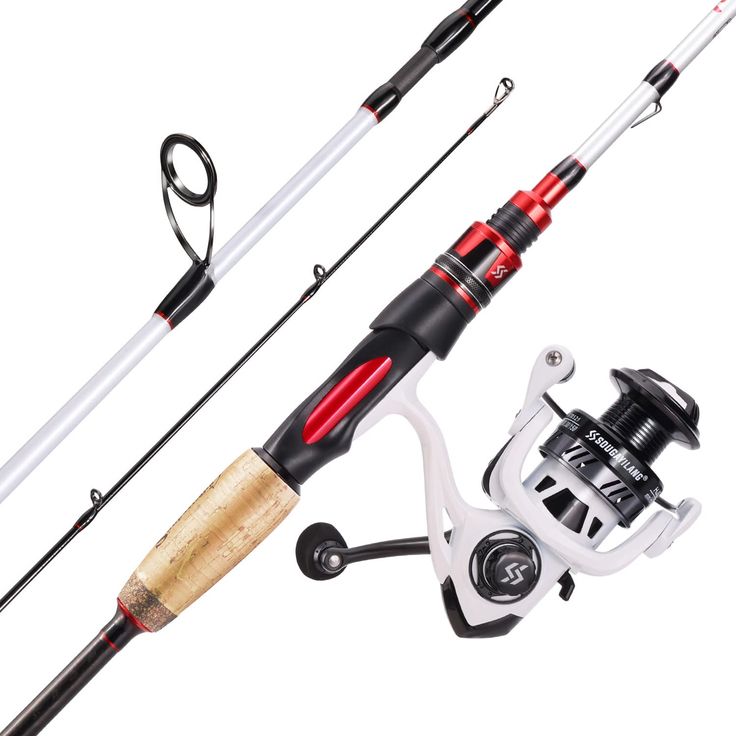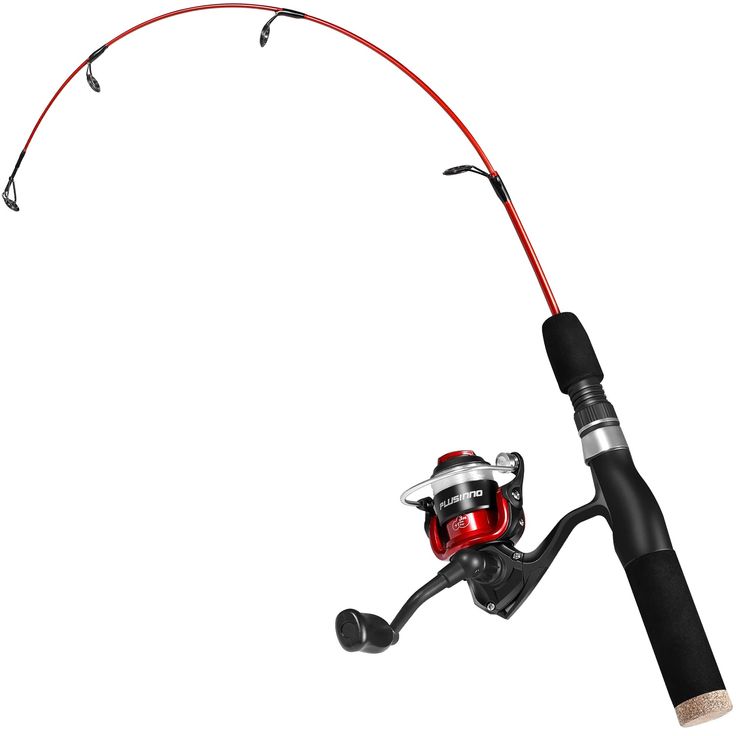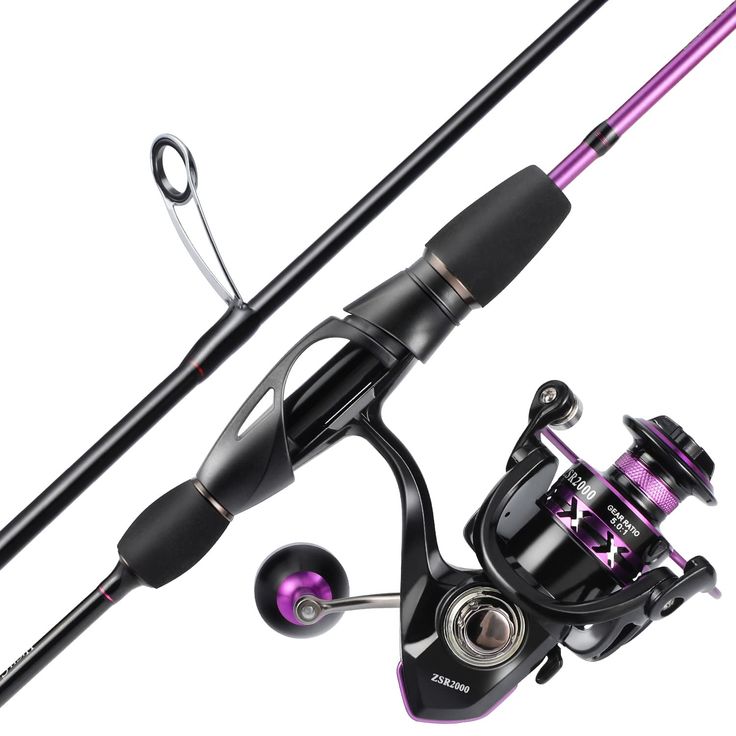Basics of Rod Length and Bass Fishing
When targeting bass, rod length plays a crucial role. The ideal length varies with technique, lure, and personal preference. In this section, we’ll look at the importance of rod length and what length rod for bass fishing.

Key Factors in Choosing Rod Length
Selecting the appropriate rod length for bass fishing is crucial and involves several important considerations:
- Fishing Method: Determine the type of bass fishing you plan to engage in, as techniques like flipping, pitching, or casting require different rod lengths.
- Casting Distance: Assess the distance you need to cast when fishing, as longer rods typically provide greater casting range, which can be beneficial in open waters.
- Comfort and Handling: Prioritize your comfort and handling preferences; a rod that feels good in your hands will enhance your overall fishing experience.
- Water Body Type: Consider the kind of water bodies you’ll be fishing in, such as lakes, rivers, or ponds, since this can influence the ideal rod length for effective fishing.
By carefully evaluating these factors, you can determine the fishing rod length that will best suit your bass fishing adventures and improve your success on the water.
Impact of Rod Length on Casting and Control
Rod length significantly influences two critical facets of fishing: casting distance and control.
- Casting Distance: Longer rods, typically over 7 feet, facilitate farther casts. This characteristic makes them particularly advantageous for fishing in open water environments where distance is crucial.
- Precision and Control: Conversely, shorter rods, ranging from 6 to 7 feet, provide superior precision and control. These rods are particularly effective in tight spots, such as heavy cover or small streams, where accurate placement of lures is essential.
- Maneuverability: The length of the rod also affects your ability to maneuver lures effectively and manage fish once hooked, impacting your overall fishing success.
By understanding the relationship between rod length, casting distance, and control, anglers can greatly enhance their effectiveness on the water.
Popular Rod Lengths for Different Bass Fishing Techniques
Choosing the right rod for bass fishing hinges on the technique being used. Below we’ll explore popular rod lengths tailored to various bass fishing methods.
Jigging Techniques
For jigging, a medium to heavy action rod ranging from 6’6″ to 7’6″ is a common choice. These rods balance sensitivity for detecting bites and strength for hook sets. Fast action tips on these rods aid in quick response times, making them ideal for manipulating jigs.
Senko Fishing
Senko fishing calls for a lighter, more responsive rod, typically between 6′ and 7′ in length with a moderate action. This type of rod allows for delicate presentations and the ability to detect subtle takes. Anglers can make precise casts to target areas using these moderate-action rods.
Crank Baits Approach
When using crankbaits, a longer rod is often preferred to achieve greater casting distances. Rods ranging from 7′ to 8′ with slow action and moderate power are ideal for launching these baits. The length helps in covering more water and enabling deep divers to reach their intended depth, key for waters like those in California where casting reach is vital.

Material and Build Considerations for Bass Rods
When selecting a bass fishing rod, material and construction are vital. Let’s dive into the differences between graphite and fiberglass rods and the significance of rod action and power.
Graphite vs. Fiberglass Rods
Bass fishermen often debate between graphite and fiberglass rods. Each type has its unique benefits.
- Graphite rods: These are lightweight and sensitive, letting you feel even slight nibbles. They’re strong and suited for detecting subtle bites.
- Fiberglass rods: They offer durability and a more forgiving bend, which is good for novice anglers. Fiberglass is heavier but less likely to snap.
Choosing between graphite and fiberglass depends on your fishing style, the sensitivity you require, and your budget.
Importance of Rod Action and Power
The action and power of a rod influence how it performs with different lures and techniques.
- Rod action: This describes how much of the rod bends when pressure is applied. Fast actions bend near the tip, while slower actions bend closer to the handle. Fast action rods are great for quick hook sets.
- Rod power: Rod power indicates its strength or lifting power. Heavier power rods are best for big bass and heavy cover. Lighter power is better for small lures and finesse techniques.
Balancing rod action and power with your bass fishing methods enhances your chances of catching that trophy bass.
Advanced Tips for Selecting Bass Fishing Rods
Navigating the world of bass fishing rods requires some expertise. Let’s dive into advanced tips to refine your choice.
Influence of Fishing Conditions on Rod Choice
The environment affects your rod decision. Clear waters may demand stealth, favoring longer rods for distance casting. Conversely, windy conditions could push you toward a shorter, more manageable rod. Don’t forget the vegetation—dense brush means a shorter, stronger rod to muscle out fish.
Matching Rod Length with Lures and Baits
Your bait selection mandates specific rod lengths. For light baits like small jigs or finesse worms, a 6-to-6.5-foot rod offers precision. Large swimbaits or deep-diving crankbaits need longer rods, around 7 to 8 feet, for long-distance casting and better leverage. Remember, the right rod length paired with your lures increases your catch rate and efficiency on the water.

Top Rod Recommendations and Their Features
When choosing the ideal bass fishing rod, brand and model specifics greatly enhance an angler’s experience. Here, we highlight top recommendations for different scenarios.
Recommended Rods for Light Baits
For targeting bass with light baits such as small jigs or finesse worms, precision and sensitivity are paramount. The KastKing Perigee II in the 6-foot to 6-foot 6-inch range is highly recommended. Its light build and moderate fast action make it perfect for precise casting and quick feedback on light bites. This rod, paired with a size 1000-2000 spinning reel, offers the perfect combination of accuracy and sensitivity needed for light lure fishing.
Preferred Rods for Deep Diving Crankbaits and Heavy Lures
For anglers using deep diving crankbaits and heavy lures, the KastKing Speed Demon Pro, ranging from 7-foot to 7-foot 11-inch, is the go-to choice. This rod series supports long casts necessary for deep water fishing and has the strength to handle large fish. The model’s slow action and moderate power help achieve great depth with crankbaits, allowing baits to stay longer in the strike zone—a crucial factor in areas like California’s extensive waters.
Common Mistakes When Choosing Bass Fishing Rods
Selecting the perfect bass fishing rod is vital for a successful catch. However, anglers often make two crucial mistakes during the selection process.
Overlooking Rod Action and Sensitivity
Many anglers ignore the importance of rod action and sensitivity. These features are critical for detecting bites and setting the hook. A rod with the wrong action can hinder your ability to catch bass. Fast-action rods provide better sensitivity and are ideal for quicker hooksets. On the other hand, slow-action rods bend more and are suitable for casting distance with certain lures.
It is important to match the action of the rod to your fishing style and the lures you use. For example, when fishing with jigs, a medium-heavy action rod with fast sensitivity helps in detecting bites and reacting swiftly.
Misjudging the Importance of Rod Length Based on Fishing Style
Another error anglers make is choosing a rod length without considering their fishing style. The length of the rod should complement the fishing method, lure type, and environment.
For instance, using a long rod in close quarters like around docks or under tree branches can make casting difficult. In contrast, short rods may not provide enough casting distance in open water. Choosing a rod that is too long or too short can limit your effectiveness, leading to a frustrating fishing experience.
Therefore, understanding what length rod for bass fishing works best for your intended technique and location is crucial. Whether it’s jigging, using crankbaits, or pitching and flipping, the right rod length can greatly impact your success rate.